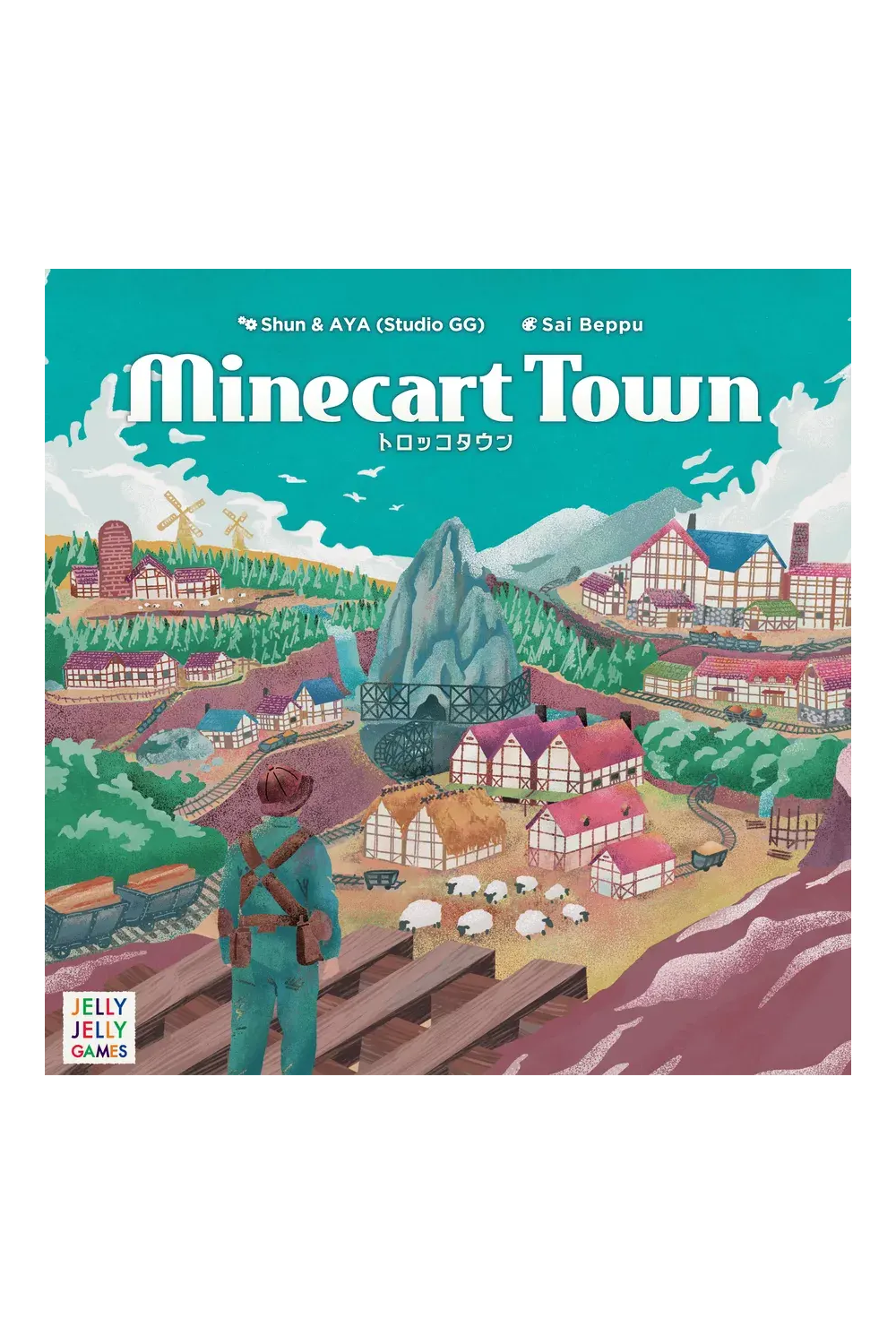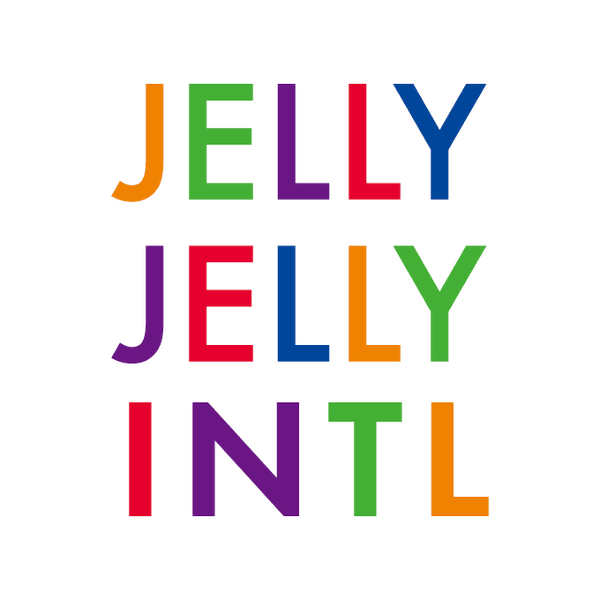
This game is an English-language version, containing an English rulebook. Minecart Town is a language independent game, so other game components do not contain any essential text.
About the Game
Minecart Town Game Overview
In Minecart Town, players will use their plots of land to produce resources, use those resources to construct buildings, transport resources between connected buildings, then use the buildings they built to process their transported resources to gain unique combinations of resources and victory points! Below is a brief overview of the game. More detailed rules can be found in the rulebook.

Production Phase:
During the production phase, all players act simultaneously; buildings with production effects will produce the resource listed on the building if they have open slots. Since every player begins with a starting tile (pictured above), all players will be able to produce 3 stone and 5 lumber at the start of the first production phase, placing the resource cubes in the open slots on the building. As players build more buildings, the number of resources produced will increase.

Some buildings may also provide victory points if the player meets certain conditions during the production phase. In the above example, the Cotton Mill would grant the player 4 victory points, since it grants 2 victory points for each sheep on the building at the start of the phase.
Construction Phase:
The construction phase is played in clockwise order. Players can either construct a building, construct or upgrade track tiles, or pass. Once a player passes, they can no longer take actions during that construction phase. Players will continue taking turns on the construction phase until every player has passed.

In order to construct a building, players will need to select one of the building tiles available on the center board, pay the resources listed on the tile, then place the tile somewhere in their town. Some buildings, like the Sheep Range, will provide resources instantly upon being placed. This can be very useful if you want to construct another building that requires a resource type you don’t currently have enough of. In the Sheep Range example (shown above), the player would pay 1 wood and 1 stone, place the Sheep Range in their town, then instantly gain 2 sheep on top of the Sheep Range.

Railroad track tiles can be constructed by paying either 1 wood or 1 stone. More useful T-junction tiles (upgraded railroad track tiles) can be built by using 2 wood, 2 stone, or 1 of each. Railroad track tiles are important because they allow the player to move their resources from building to building during the transportation phase. Many buildings only provide effects at the start of the production phase or the processing phase, so efficiently connecting your buildings is necessary. It is also possible to upgrade existing railroad track tiles by spending an additional wood or stone (shown above).
Transportation Phase:
All players perform the transportation phase simultaneously, freely moving their resource cubes throughout their towns.

In order to move resources to buildings, the buildings need to be connected by railroad tracks. In the above example, the player is able to move wood from the Forest to the Charcoal Kiln via their railroad tracks. Though resources can pass through buildings that do not depict that resource type, their destination must have the resource included in one of its effects. Note that the wood moving to the Charcoal Kiln will be converted into Coal during the production phase, making the Kiln a viable destination.

Adjacent building tiles cannot transfer resources amongst themselves - they must be connected by railroad tiles. The above example shows how the stone resource cube in the Mine cannot cross through the Forest to reach the lower Charcoal Kiln, while the wood cubes can move via the railroad tracks to the Wheat Field before moving via the railroad tracks again to the upper Charcoal Kiln.
Processing Phase:
The processing phase is performed by all players simultaneously.

Each player will perform all of the processing phase effects on their building tiles, exchanging some of their resources for different resources or victory points. The Butcher building, shown above, will convert 1 coal and 1 sheep resource into 7 victory points during the processing phase. In the final round only, the transportation and processing phases are performed simultaneously, meaning that players can process resources of one type into another, then immediately transport those resources to another building to gain a different resource or victory points!

End of the Game:
At the end of the game, players will calculate their victory point totals, being sure to activate end-of-game building effects that grant them victory points. The Ranch, shown above, is one such building, providing 3 victory points per sheep resource placed on the building, plus an additional 6 points if the player is able to completely fill in the pen with 8 sheep. This means the Ranch can generate 30 total points if it has 8 sheep!
The player with the most victory points after calculation is the winner!
Game Related Videos
The following video provides a brief overview of the game:
Please find some reviews and playthroughs of Minecart Town below:
Rulebook Download
Click here to view/download a PDF rulebook for Minecart Town.

